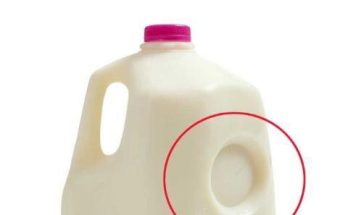
In a surprising move, Tesla has announced that it will be discontinuing the glossy seat backs in its Model X, opting instead for a matte finish. This shift marks another step in Tesla’s ongoing efforts to refine the interior design of its vehicles, aligning with the brand’s ever-evolving approach to aesthetics and functionality. The change has sparked a variety of reactions from Tesla owners, car enthusiasts, and industry observers, many of whom are curious about the implications of this design adjustment. While some are excited about the new look and feel, others are concerned about the impact it will have on the overall luxury experience that the Model X is known for.

The glossy seat backs, which were initially part of the premium finish of Tesla’s luxury SUV, have long been a distinctive feature of the Model X. The shiny, reflective surface was seen as a bold design choice that complemented the vehicle’s high-tech, futuristic interior. It gave the cabin a clean, sleek appearance, with a sense of high-end polish and a glossy sheen that caught the light in an elegant way. However, over time, some owners have raised concerns about the practicality of the glossy finish, with many noting that the reflective surface often attracted fingerprints, smudges, and scratches, detracting from the aesthetic appeal. This feedback seems to have resonated with Tesla, which has made the decision to replace the glossy backs with a matte alternative in order to address these concerns.

The matte finish, which has been incorporated into other parts of the Model X in recent updates, is seen as a more practical and durable option. The non-reflective surface is less likely to show fingerprints, dirt, or smudges, offering a cleaner, more understated look. For many Tesla owners, the matte finish also feels more refined and sophisticated, aligning better with the minimalist interior design that Tesla is known for. This new design choice is in line with a broader automotive trend toward matte and satin finishes, which have become increasingly popular in the luxury car market. Many high-end manufacturers have adopted matte interiors and exteriors to create a more subtle, yet modern, appearance that focuses on quality materials and craftsmanship rather than ostentation.
From a functional perspective, the matte finish also makes sense. The original glossy backs on the seats were prone to visible wear and tear, especially in a vehicle that experiences heavy usage like the Model X, which is often used for family trips and other daily tasks. A matte surface is more forgiving, maintaining its appearance for a longer period without the need for constant cleaning. For Tesla, this may also help streamline manufacturing processes, as the matte finish could be easier to apply and maintain during production, potentially reducing costs in the long term.
However, the change has not come without controversy. Some Model X owners, particularly those who had already purchased vehicles with the glossy finish, have expressed disappointment, feeling that they were not fully informed about the shift in design before purchasing their vehicles. Some are even questioning whether the change is a result of cost-cutting measures rather than a genuine desire to improve the car’s aesthetics. A few Tesla fans have taken to social media to voice their displeasure, arguing that the glossy finish was a key element of the Model X’s luxurious appeal, and that the matte backs may diminish the overall premium experience that the car was meant to provide.
There is also the matter of resale value, as some buyers of older Model X vehicles with the glossy seat backs may feel that their cars are now less desirable due to the new matte standard. While the change may not significantly affect the car’s overall market value, it could influence how prospective buyers perceive the vehicle’s interior. On the other hand, some industry experts believe that the shift toward a matte finish could increase the long-term appeal of the Model X, particularly among those who prioritize a more modern and utilitarian aesthetic over flashy luxury details.
Tesla’s decision to make such a change also speaks to the company’s commitment to continuous improvement and listening to customer feedback. Elon Musk’s company has always been known for its iterative approach to design, often making updates to vehicles over time rather than adhering to a traditional model cycle. This has allowed Tesla to rapidly adapt to consumer preferences, often introducing software updates and hardware modifications that improve the vehicle’s overall performance and user experience. The change in the Model X’s seat back finish could very well be part of this larger strategy to fine-tune the car and make it more aligned with the needs and desires of its owner base.
In the broader context of Tesla’s brand evolution, the discontinuation of glossy seat backs also highlights the company’s move toward a more understated, minimalist approach in both its interior and exterior designs. Tesla vehicles have long been praised for their simplicity and focus on technology, and the matte finish on the Model X’s seat backs may further reinforce this brand identity. With a growing number of automakers offering vehicles with highly complex and ornate interiors, Tesla’s focus on clean, functional design could continue to set the company apart as it pushes forward in the electric vehicle market.
In conclusion, the discontinuation of the glossy Model X seat backs in favor of a matte finish represents an interesting shift in Tesla’s design philosophy. While some owners may miss the glossy look, the matte alternative promises a more practical, durable, and modern aesthetic that is likely to resonate with many Tesla enthusiasts. As the automotive industry continues to evolve, Tesla’s willingness to adapt its vehicles based on customer feedback and market trends will likely ensure that the Model X remains a strong contender in the luxury electric SUV market for years to come. Whether this change will lead to a more satisfied customer base or spark further debate remains to be seen, but one thing is certain: Tesla’s approach to design will continue to be a topic of fascination and discussion for years to come.


